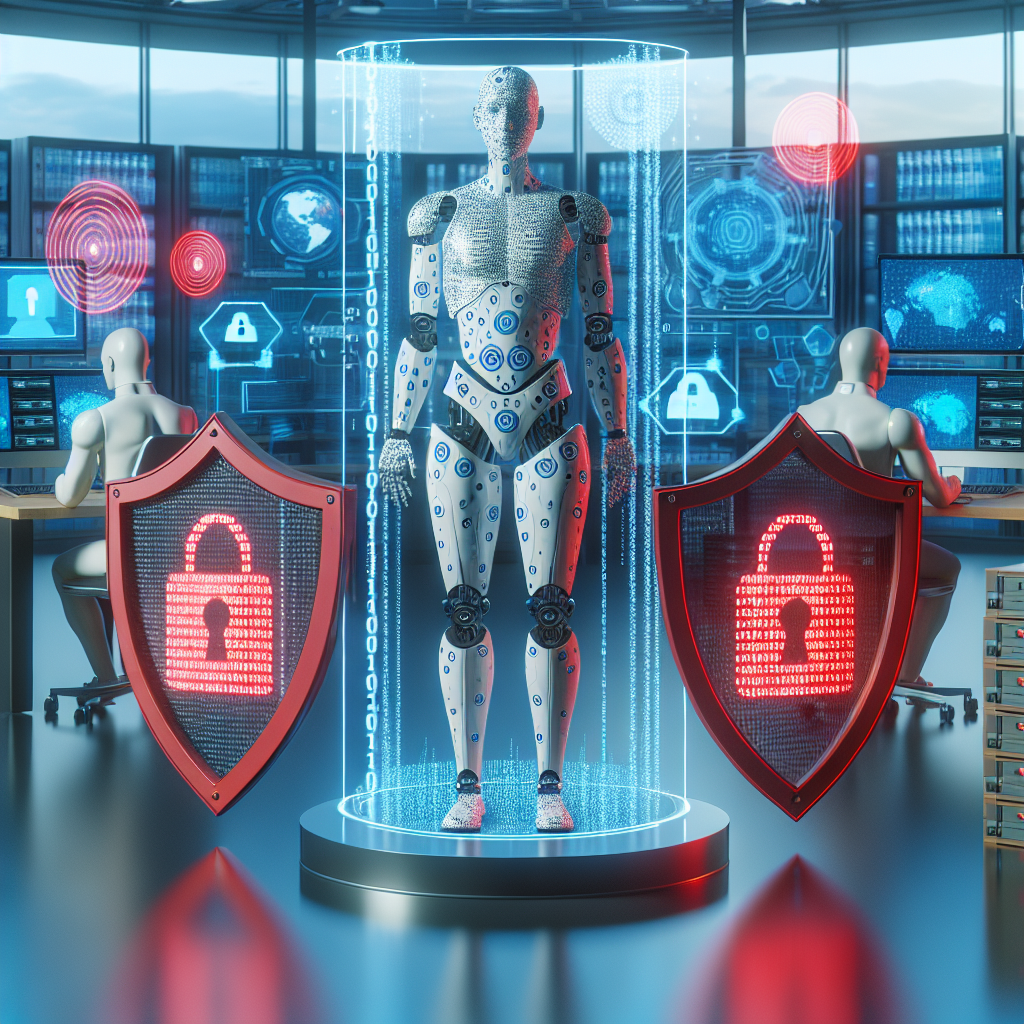Artificial Intelligence (AI) has become an integral part of our daily lives, with applications ranging from virtual assistants like Siri and Alexa, to self-driving cars, to predictive analytics in healthcare and finance. While the potential benefits of AI are vast, there are also significant challenges when it comes to ensuring the security and privacy of AI systems. In this article, we will explore some of the key challenges of security in AI development and discuss potential solutions to address these issues.
One of the primary challenges of security in AI development is the vulnerability of AI systems to attacks. AI systems are complex and often rely on large amounts of data to make decisions. This data can be manipulated or poisoned by malicious actors, leading to biased or incorrect results. For example, in 2016, Microsoft’s chatbot Tay was quickly manipulated by users on Twitter to spout racist and inflammatory comments. This highlights the need for robust security measures to protect AI systems from malicious attacks.
Another challenge is the lack of transparency in AI systems. AI algorithms can be highly complex and difficult to interpret, making it challenging to understand how decisions are being made. This lack of transparency can lead to errors or bias in AI systems, as well as make it difficult to identify and address security vulnerabilities. Additionally, the use of proprietary algorithms by companies can make it difficult for external researchers to audit AI systems for security flaws.
Privacy is also a major concern when it comes to AI development. AI systems often rely on large amounts of personal data to make decisions, leading to concerns about how this data is being used and protected. For example, facial recognition systems used by law enforcement agencies have raised concerns about the potential for misuse and invasion of privacy. Ensuring that AI systems are designed with privacy in mind and comply with data protection regulations is essential to building trust with users.
In addition to these challenges, there is also the issue of bias in AI systems. AI algorithms are only as good as the data they are trained on, and if this data is biased or incomplete, it can lead to biased outcomes. For example, a study by researchers at MIT found that facial recognition systems are more likely to misidentify people of color, leading to concerns about discrimination in AI systems. Addressing bias in AI systems requires careful consideration of the data used to train these systems and the algorithms themselves.
So, how can we address these challenges and ensure the security of AI systems? One potential solution is to increase transparency in AI development. This could involve making AI algorithms more open and accessible to external researchers, as well as providing clear explanations of how decisions are being made. By increasing transparency, we can help to identify and address security vulnerabilities in AI systems more effectively.
Another solution is to implement robust security measures to protect AI systems from attacks. This could involve using encryption to protect data, implementing authentication mechanisms to prevent unauthorized access, and regularly auditing AI systems for security flaws. By taking a proactive approach to security, we can help to prevent malicious attacks on AI systems and protect the integrity of these systems.
In terms of privacy, it is essential to design AI systems with privacy in mind from the outset. This could involve implementing privacy-enhancing technologies such as differential privacy, which allows for the analysis of data without revealing sensitive information about individuals. By prioritizing privacy in AI development, we can build trust with users and ensure that personal data is being handled responsibly.
Addressing bias in AI systems requires a multi-faceted approach. This could involve diversifying the data used to train AI systems to ensure that it is representative of the population, as well as implementing algorithms that are designed to minimize bias. Additionally, it is important to regularly audit AI systems for bias and take corrective action if bias is identified. By addressing bias in AI systems, we can help to ensure that these systems are fair and equitable for all users.
In conclusion, the challenges of security in AI development are significant, but with careful consideration and proactive measures, we can address these challenges and build secure and trustworthy AI systems. By increasing transparency, implementing robust security measures, prioritizing privacy, and addressing bias, we can help to ensure that AI systems are secure, fair, and ethical. As AI continues to play a larger role in our lives, it is essential that we prioritize security and privacy to protect the integrity of these systems and build trust with users.
FAQs:
Q: How can we ensure the security of AI systems?
A: Ensuring the security of AI systems requires implementing robust security measures, increasing transparency in AI development, prioritizing privacy, and addressing bias in AI systems.
Q: What are some examples of security vulnerabilities in AI systems?
A: Security vulnerabilities in AI systems can include attacks that manipulate data to bias outcomes, lack of transparency in AI algorithms, and privacy concerns related to the use of personal data.
Q: What is bias in AI systems and how can it be addressed?
A: Bias in AI systems refers to the tendency for AI algorithms to produce discriminatory or unfair outcomes. Bias can be addressed by diversifying the data used to train AI systems, implementing algorithms designed to minimize bias, and regularly auditing AI systems for bias.
Q: How can we protect personal data in AI systems?
A: Personal data in AI systems can be protected by implementing encryption, authentication mechanisms, and privacy-enhancing technologies such as differential privacy. It is also important to design AI systems with privacy in mind from the outset.

